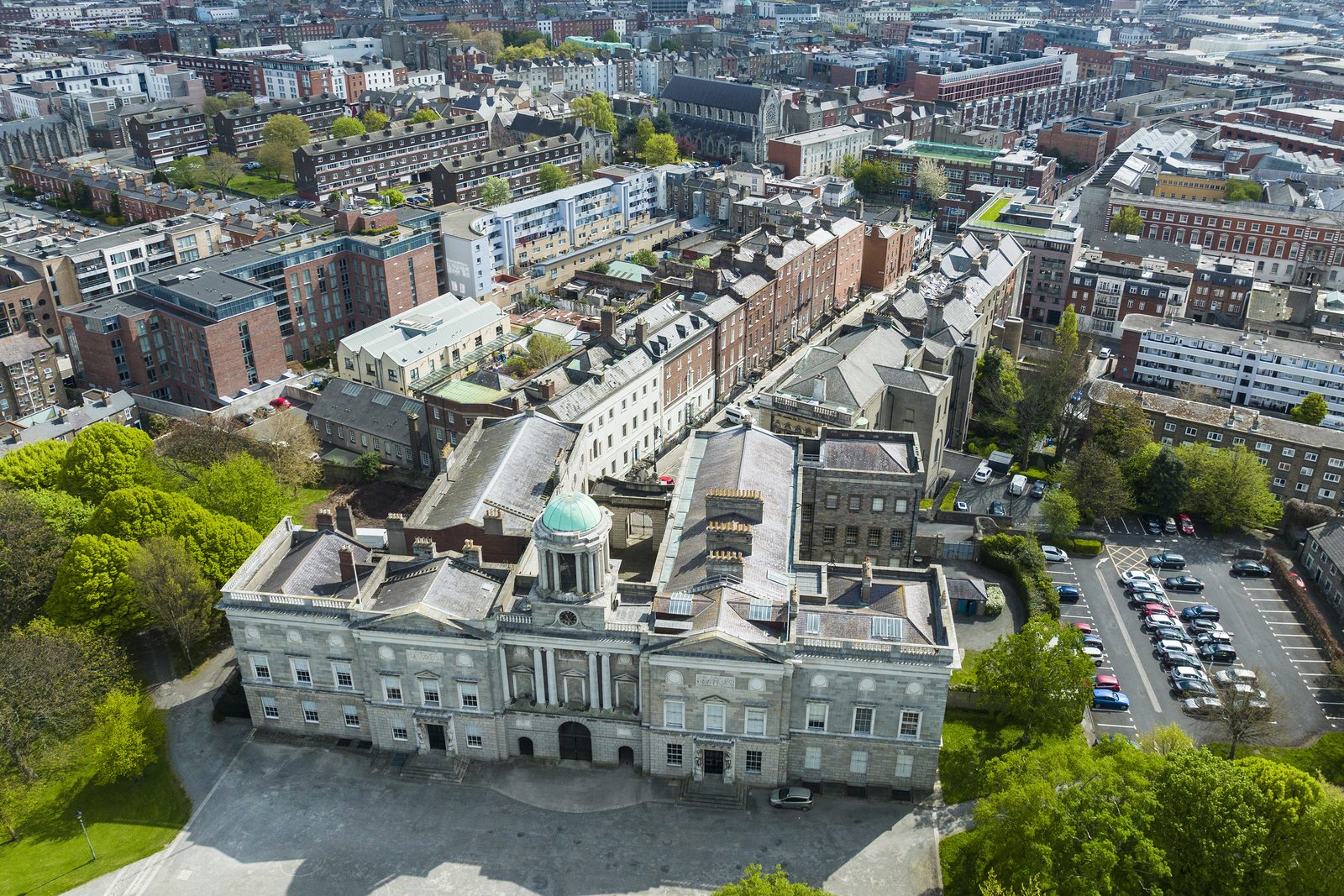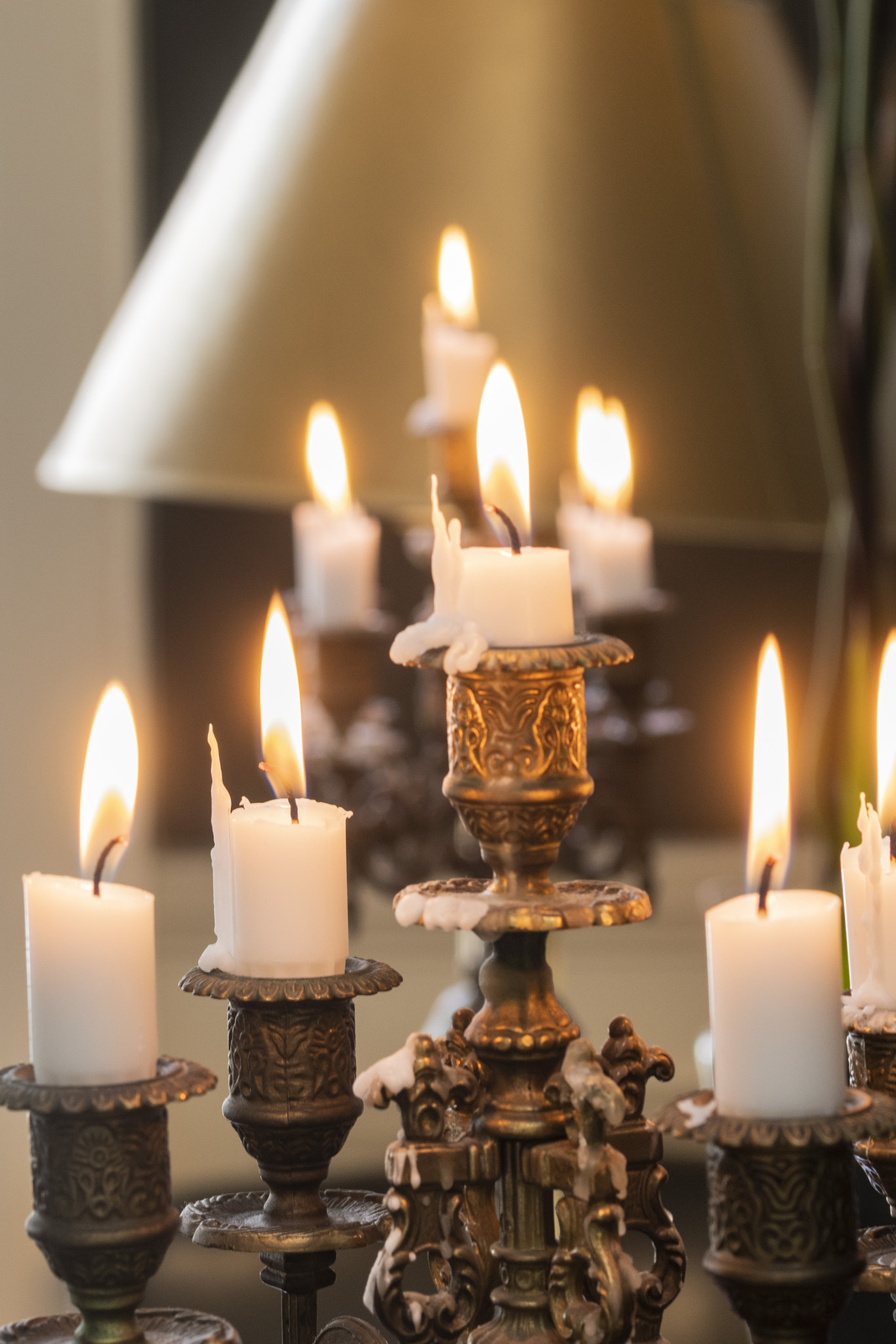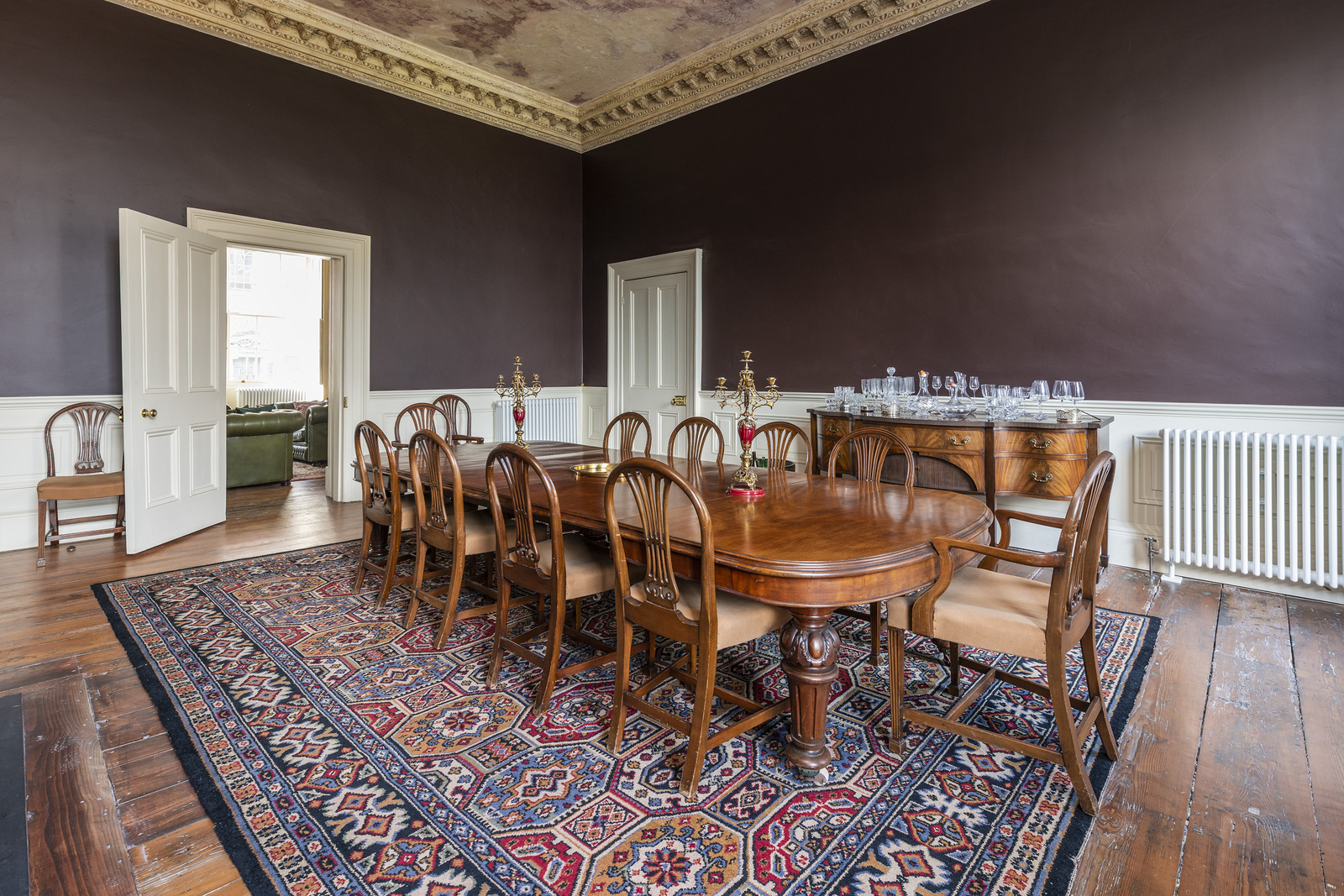
Henrietta Street is very much the same now as when it was built in the mid-18th century. Work began on the street in the 1720s when houses were built as homes for Dublin’s wealthiest families. No.7 is an exceptional example, and is in keeping with the original grandeur and scale of these extraordinary homes.
Nathaniel Clements (MP) was a developer of property in Georgian Dublin. He built and lived in No. 7 Henrietta Street from 1734 to 1757. Clements became the main financial manager of the British and Irish Government in Ireland during the period, and was de facto Minister for Finance from 1740 to 1777. Clements was appointed to the office of Chief Ranger of the Phoenix Park and Master of Game and built the Ranger's lodge (now Áras an Uachtaráin) to his own design in 1751.

Here in the elegant enclave of Henrietta Street, Clements and his wife established themselves as leaders of fashion and style, hosting lavish entertainment in the sumptuous surroundings of No. 7.
They enjoyed a reputation as people of wealth and elegance and utilised their beautiful surroundings to establish their place as arbiters of taste. Hospitality was an essential element in maintaining social standing and political power in the eighteenth century. There was little distinction at this time between social and political engagements, both serving the same ends in terms of advancement.
Many of the assemblies and entertainments held at No. 7, where show and display were the order of the day, had an overt political tone involving heavy drinking, conviviality, toasting, debate and political factionalism.

The ground floor dining room at no 7 was witness to many a scene of raucous political revels which included much dispute over the money bill crisis of 1753 to October 1754.
Marmaduke Coghill (Chancellor of he exchequer) described one particular drink-fuelled occasion ‘…at Mr Clement’s house’, where ‘after the company had drank very hard’, a heated political disagreement had broken out ‘between the Speaker [Henry Boyle, 1st Earl of Shannon and the Secretary [Mr Cary]’. Following another such occasion in 1752, when Clements himself admitted that they had ‘drank to excess’, he came under censor from the British administration for his supposedly disrespectful ‘conversation and behaviour in private company.’
No. 7 follows a room layout that separates its public, private and domestic functions. The house is built over five floors, with a railed-in basement, brick-vaulted cellars under the street to the front, a garden and mews to the rear, again with brick vaulted tunnels and store rooms, leading to the original stables and coach house on the site to the rear.
In the main house, the reception rooms are on the ground and first floors. On these floors, a sequence of three interconnecting rooms are arranged around the grand two-storey entrance hall with its cascading staircase.

On the ground floor the less formal family rooms were situated, where the family would sit, chat and eat. One floor up and the formal reception rooms look over the street to the front and the garden to the rear.
These rooms, with their large windows are light filled and majestic. This is where the lord and lady would entertain visitors, with servants carrying and fetching from the kitchens two floors below.
The family bedrooms were located on the floor above, and the servants quarters were located in the attic. A second back stairs would have provided access to all floor levels for family and servants alike.
With the signing of the acts of Union in 1801, the political and social centre shifted from Dublin to London, taking the most influential of the residents of the city to Regency London.
Dublin was very much a second class city during this period and after the gentry left the professionals moved in, and Henrietta Street became inhabited by members of the legal profession.
In the 19th century the rooms of the house dispensed with fine furnishings and became more utilitarian, with desks and quills replacing relaxing Soft furnishings and floral displays.
Dublin’s population swelled by about 36,000 in the years after the Great Famine, with people moving to the cities in search or work. This influx presented an opportunity to landlords and agents to carve their large houses into rooms and flats for the city’s new residents in search of cheap housing. This was the beginning of the tenements in Dublin.
Like all grand houses, during this period the houses were re-configured to provide accommodation to the masses. Henrietta Street, once fine houses for the gentry and their servants, were now overflowing with the poor families of the city, living sometimes all together on one room, and doing cooking washing and sleeping in the same space.

One tap and an outside toilet would service all of the families in the building and sanitation was almost non existent. By 1911 850 people lived on the street. The census showed that it was a hive of industry – there were milliners, a dressmaker (tailoress!), French polishers, and bookbinders living and possibly working there.
As Ireland moved into independent and the new state took charge, things improved. In 1931 Dublin Corporation appointed a man called Herbert Simms as town planner, and he set about planning and creating the first suburbs.
No. 7 became a family home again, and then an artists colony, before the current owner acquired it and set about the slow process of restoration.
Current owner (Fergus Ryan BL) is a practising barrister and here is a little insight into his stewardship of this house:
I viewed the property in early 2017 when it was previously up for sale. The building was vacant and described as semi-derelict, however, I immediately fell in love with this imposing property.
What first struck me when I entered the building was the wonderful stone flags and its double height entrance/staircase hall along with the superbly carved main staircase, which runs from the ground to the first-floor landing. Also of immediate attraction was the apron of the first-floor landing which retained in original form, its handsome hardwood carving of early Rococo character. For me, the entrance hall walls, with lugged plaster panels, and the ceiling with its original compartmentalised fine plasterwork, were breath taking. My mind was just about made up to purchase the house from that moment.
Walking further into the back hallway, I saw the virtuosic, almost spiral, service stair-case which runs from the basement to the top of the house. This staircase, although in very poor condition at that time, was unaltered from its original construction and retained its fine Doric balusters and its ramped handrail. The dramatic vista the staircase affords from every floor landing to the floors above and below is unquestionably ‘a coup de theatre’.
When I entered the ground floor rear parlour room, I immediately noticed that the room retained a complete run of wooden cornicing and its wonderful original wooden panelling. The ground and first floors which were mostly devoted to entertaining spaces evidenced a remarkable amount of the surviving original decorative features. The dining room and drawing room were located off the entrance/staircase hall. The first floor reception rooms are generously proportioned and grand with superb cornicing which at the time was almost completely covered by hundreds of years of whitewashing.
I had previously read a comment by Lady Louise Conolly on a London house which her husband had taken in spring of 1759, where she called it ‘exactly such a house as Mr Clement’s old house (no 7) – just that size…[and] a very tolerable house for a ball’
I bought No. 7 later that year and set about the conservation and repair of the historic fabric, whilst upgrading it to meet the needs of a modern single-family home. This included the removal of the inappropriate sub-divisions, revealing the significance of the original spaces and their very fine proportions. I replaced a number of fireplaces, including a very fine 18th century Irish statutory and Sienna marble fireplace. Extensive restorations were carried out to bring the ceilings, walls and floors back to their former glory.
In addition, I purchased the grounds and derelict buildings to the rear, that housed the original mews. So the historic association of House, Garden and Mews was re-established for the first time in many years.
The house has played host to firms of Solicitors, Barristers as well as landscape artists John Faulkner and PV Duffy during the periods 1840 through to 1870’s. The word ‘Tenement’ was used to describe no 7 for the first time in 1883 and the house eventually provided accommodation for 108 people in the early 1900’s.
Some of the Movies/TV made on Henrietta St.
Movies made IN No.7 Henrietta St. –
Note The Stuccodore of No 7 is most likely Edward Simpson.
